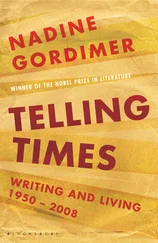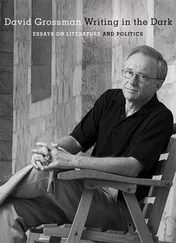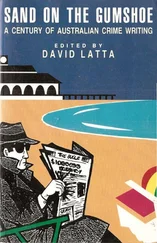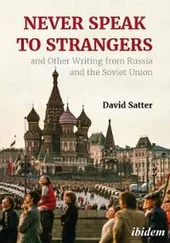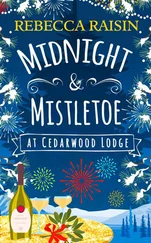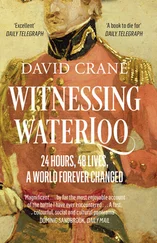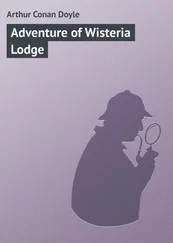Postscript
When a shorter version of this essay was published in the Guardian on 15 December 2012, among the comments it received from readers on the newspaper’s website was an interesting contribution from a lady identified as ‘AggieH’. The theme of Trollope’s novel, she wrote,
. . seems to be an issue for many generations. As I read, I was reminded of similar themes in short stories by Marcel Aymé in the early ’40s and Kurt Vonnegut in the ’60s. In Vonnegut’s story of the future, the US population has been ‘ stabilized at forty million souls ’. The average age is 129. ‘There were no prisons, no slums, no insane asylums, no cripples, no poverty, no wards. All diseases were conquered. So was old age. Death, barring accidents, was an adventure for volunteers.’ This ‘utopian (or dystopian)’ situation was achieved by law. ‘The law said that no newborn child could survive unless the parents of the child could find someone who would volunteer to die.’ To volunteer, you ring the Ethical Suicide Studios — known to all as ‘the municipal gas chambers’ — at the Federal Bureau of Termination. Its telephone number (and the story title) is 2BR02B.
It wasn’t until I looked up Vonnegut’s story that I realised this number when spoken is ‘To be or nought to be’. It’s a black-comic fable about population control: a man whose wife has just given birth to triplets and wants to keep them must find three ‘volunteers’.
‘Tickets on Time’ by the French writer Marcel Aymé (1902–67) is a more whimsical fantasy, though its premise is closer to Trollope’s. The story consists of extracts from the diary of a vain and ambitious Parisian writer, which begins:
A ridiculous rumour is going round the neighbourhood about new restrictions. In order better to anticipate shortages and to guarantee improved productivity in the working portion of the population, the authorities are going to put unproductive consumers to death; unproductive meaning: older people, retirees, those with private income, the unemployed and other superfluous mouths. Deep down, I think this measure is quite fair.
The diarist changes his opinion when he discovers that writers and artists are classified among the less productive and useful members of the community. Nobody, however, is actually killed under this regulation. All are issued with tickets entitling them to a certain number of days of life per month, related to their value to society, and during the remaining days they cease to exist, by some means that is never explained but might be compared to the way digitalised information can be stored in the Cloud, deleted terrestrially, and later recovered. The diary entries over several months record the effects, both comic and serious, of this regime on personal and collective life. An elderly husband who was swallowed up into the ether when his monthly tickets ran out, suddenly rematerialises in his bed between his young wife and her lover. At first the new regulation seems to reduce extravagant consumption by the idle rich, but after a while a black market in tickets predictably evolves, workers selling some of their rations to the wealthy, so the inequalities of society are restored by market forces. Because death is temporary and virtual in this fable, less is at stake than in the other two texts, and it does not engage as directly with the ethical implications of euthanasia.
EARLY IN 2004, while waiting for the autumn publication of my novel about Henry James, Author, Author , anxiously aware that Colm Tóibín was about to publish his novel, The Master , on the same subject, I occupied myself by writing the introduction to a Penguin Classics edition of H.G. Wells’s novel Kipps . Early in April I made this note in my very occasional diary:
Researching Kipps I came across in Wells’s Experiment in Autobiography (1934) an interesting story of the ménage of Mr and Mrs Hubert Bland at Well Hall, Eltham. He was a Fabian, a philanderer who converted to Catholicism, she was E. Nesbit. Possible material for a novel like Author, Author here. Sex, politics, children’s literature. . How much has it been worked over?
Author, Author was a complete change of direction in my work, and I had enjoyed researching and writing it so much that I was receptive to this idea for another book of the same kind. The potential novel I glimpsed in those few pages of Wells’s autobiography was one in which his involvement with the Blands and the Fabian Society in the early years of the twentieth century, and the parallel development of his career with Edith Nesbit’s at that time, would provide a structure similar to the relationship between Henry James and George Du Maurier in Author, Author. But I soon discovered from Julia Briggs’s excellent biography, A Woman of Passion: The Life of E. Nesbit (1987) that Edith’s interesting story began long before she met Wells, while his own continued long after they became estranged, so their relationship could be only one episode in a novel that was mainly about him. Meanwhile Colm Tóibín’s novel about Henry James had appeared to great acclaim, which, as I had feared, affected the reception of Author, Author adversely when it was eventually published. If two books on the same subject appear in the same year, the second one invariably suffers. Unwilling to risk the same thing happening to my next book, I shelved the Wells project, and wrote a fictional novel set in the present day, Deaf Sentence , published in 2008; but when that was finished I couldn’t resist going back to Wells.
The postponement was fortunate. I had written in my diary in April 2004: ‘ Possible material for a novel . . How much has it been worked over?’ Little did I know, but it was probably being worked over at that very moment by A.S. Byatt, who five years later would publish a novel drawing on it. By that time I had started my novel about Wells, having spent a couple of years on research, and had written approximately 15,000 words. On 1 May 2009, I wrote in my occasional diary:
I discovered in last weekend’s newspapers that a major character in A.S. Byatt’s new novel The Children’s Book is inspired by and partly based on E. Nesbit and her ménage, and that there is a sexual-predator character who resembles H.G. Wells. The Zeitgeist strikes again! I wondered despairingly if the Tóibín saga was going to repeat itself.
On further reflection I decided there was no real cause for concern. There was obviously much less overlap in the content of the two novels than in the case of Author, Author and The Master , and by the time mine was published there would be plenty of blue water between them. I decided to press on with my book without reading A.S. Byatt’s, to avoid being influenced by it. If, however, I had started writing A Man of Parts straight after Author, Author , it might very well have appeared in the same year as The Children’s Book .
Before I thought of writing a novel about Wells I already knew something about him from writing literary criticism about his work, but the more deeply I looked into the life the more astonishingly rich in human and historical interest it appeared. Beginning inauspiciously (he was the son of unsuccessful shopkeepers and apprenticed to the drapery trade at the age of fourteen) it stretched from 1866 to 1946, a period of global political turmoil, including two world wars in which he played a public role. The bibliography of his publications contains more than 2,000 items, including over a hundred books. He met and conversed with nearly every well-known statesman and writer of his time, and in his science fiction and speculative prose he foresaw the invention of, among other things, television, tanks, aerial warfare and the atom bomb. He made a strenuous effort to direct the Fabian Society towards his own idiosyncratic model of socialism (an updated version of Plato’s Republic ) nearly destroying the society in the process, and worked selflessly if vainly all his life for the cause of World Government. His Outline of History , published in 1920, was an ambitious attempt to ‘teach the peoples of the world. . that they are all engaged in a common work, that they have sprung from common origins, and all are contributing some special service to the general end’. It was a global bestseller.
Читать дальше

